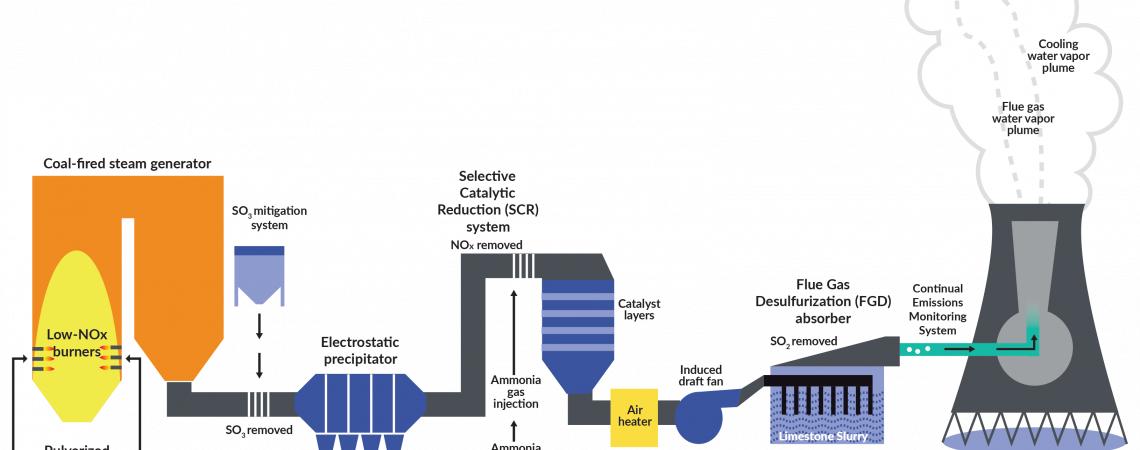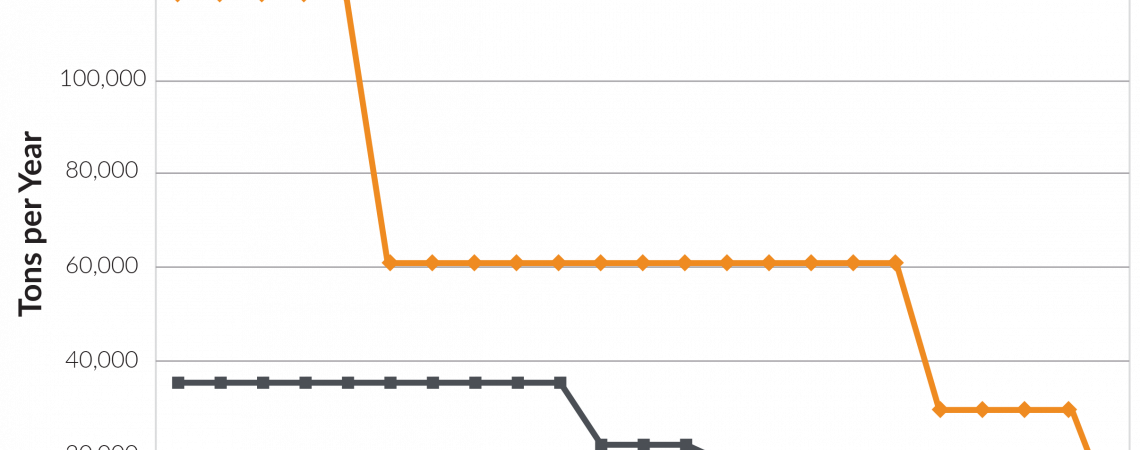Years ago, if you drove past Cardinal Power Plant, you likely saw a gray cloud emerging from the towers — that color was caused by fly ash and a few other various byproducts of burning coal.
Today, the billowing cloud is pure white and nearly all water vapor. It’s a clearly visible indicator of the investments Buckeye Power has made in emissions control equipment, making Cardinal Power Plant one of the cleanest power plants of its kind in the world.
Located along the Ohio River in Brilliant, Ohio, Cardinal is Buckeye Power’s baseload source for power generation, meaning it supplies Ohio’s 25 electric cooperatives with electricity 24 hours a day, 7 days a week. It’s also a main economic driver in the region, providing more than 300 jobs. The coal-fired plant consists of three units: one owned by AEP and two owned by Buckeye Power. All are managed by Buckeye Power.
Good stewards
Becoming a clean plant didn’t happen overnight, but Buckeye Power, Cardinal, and Ohio’s Electric Cooperatives are dedicated to providing affordable electricity that’s as environmentally responsible as possible. Years of investment, monitoring, and adapting to changing regulations and requirements brought Cardinal to where it is today and ensures that it can produce electricity for years to come.
“We want this plant to survive, and we want it to remain one of the cleanest power plants in the world,” says Bethany Schunn, Cardinal Operating Company’s plant manager. “We believe we play an important role in keeping the grid reliable and electricity affordable.”
The environmental affairs department at OEC constantly monitors and reports data to ensure that the plant complies with or even exceeds environmental standards and regulations. “We work individually and with other utilities, along with Ohio EPA, to find common-sense compliance approaches that protect the environment and are in the best interests of our members,” says Caitlin Schiebel, OEC’s director of environmental affairs.
Reducing emissions
One of the first controls to be implemented on all three units at Cardinal was electrostatic precipitators, which remove the fly ash from the exhaust gas stream. Fly ash from burning coal now passes through electrically charged plates, which pull the ash particles out of the stream. When the plates are full, the fly ash is moved to a hopper at the bottom of the plate. The process removes more than 99% of the fly ash particles produced by burning coal.
In the early 2000s, Buckeye Power and AEP added equipment that works much the same way in which an automobile’s catalytic converter removes nitrogen oxide (NOx) from engine exhaust — thereby reducing Cardinal’s NOx emissions by about 90%.
Around 2010, Cardinal began attacking another coal-burning byproduct, sulfur dioxide (SO2), which contributed to acid rain. Known as scrubbers, the system is actually a large tank containing a mixture of limestone and water, and it removes over 98% of SO2 from the plant’s emissions. The process to remove SO2 is like blowing bubbles through a straw. The gases are sent to the bottom of the limestone slurry, and as it bubbles up, the calcium in the limestone reacts with the SO2 to form water and gypsum, which is recycled and sold to wallboard companies.
“With that process, not only do we eliminate nearly all sulfur dioxide from our emissions,” Schunn says, “but we can make a little money by selling the gypsum and avoid disposing of it in our landfill.”
Mission control
Gas emissions are continuously monitored by an automated mission control system, which helps ensure compliance with clean air requirements for SO2, NOx, and carbon dioxide emissions.
“We have systems in place that measure air emissions 24 hours a day, seven days a week, and we complete daily and weekly inspections of Cardinal’s facilities,” Schiebel says. “We submit reports on a monthly, quarterly, and annual basis that certify our compliance with regulations.”
Depending on the political landscape, environmental regulations continue to get stricter, and at the same time, technology continues to improve — which combine to constantly set new benchmarks for Buckeye Power to reach. Regardless, plant operators stay transparent.
“It doesn’t matter if it’s a small thing or a big environmental issue — we make sure to list everything that happens here,” says Schunn. “We share those events each month to help make ourselves even better.”
Cost of doing business
Ohio electric cooperatives have invested more than $1 billion of their members’ money over the past 20 years in systems that minimize Cardinal Plant’s environmental impact.
The cooperatives collaborated in the 1960s to build the plant to provide electricity to their members and have made constant, consistent investments in the years since to ensure that Cardinal can reliably provide that power in an environmentally responsible way.
“It’s extremely important for the co-ops to make sure that their members’ investment isn’t wasted,” says Pat O’Loughlin, CEO of Ohio’s Electric Cooperatives. “That’s why we need to make sure we do everything we can to keep our largest and most valuable asset doing its job until that investment is paid in full.”
Buckeye Power has been working to pay down the debt more quickly in recent years so that it can invest in other power sources — including renewables — as they become cost-effective.












